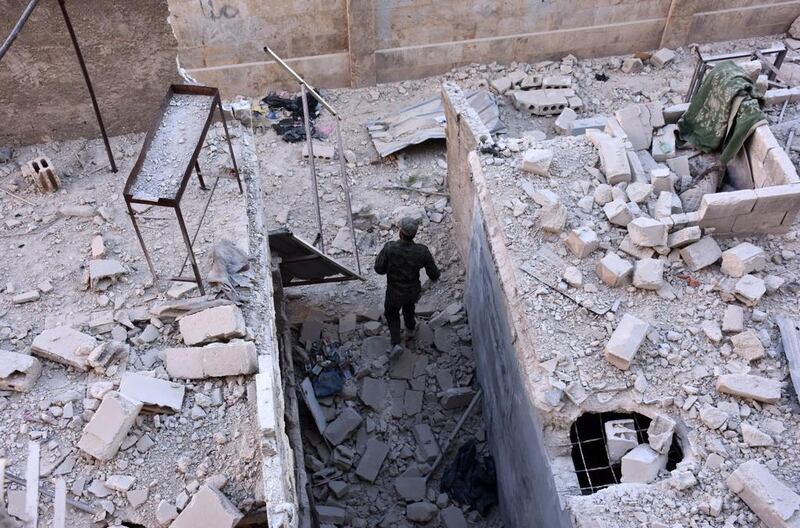ALEPPO // Syria’s rebels lost all the northern neighbourhoods of their stronghold in eastern Aleppo on Monday, as Assad forces gained significant ground in its offensive to recapture the entire city.
The army’s advance has prompted an exodus of desperate civilians, some fleeing to districts held by the government or Kurdish forces, others heading south into areas still under rebel control.
The rebel losses suggested it was only a matter of time before all of eastern Aleppo — held by the opposition since 2012 — was back in government hands.
The loss of the city’s east would be a potentially devastating blow for Syria’s rebels, who have seen their territory fall steadily to the government since Russia began an intervention to bolster president Bashar Al Assad in September 2015.
On Monday, government forces seized the Sakhur, Haydariya and Sheikh Khodr districts, while Kurdish fighters took the Sheikh Fares neighbourhood from rebels, the Syrian Observatory for Human Rights monitor said.
Kurdish forces in Syria are officially neutral, but the opposition views them as effectively allied with the regime in its bid to recapture Aleppo city.
The advances left all of north-eastern Aleppo in government hands, and prompted more civilians to join a wave of displacement from the east.
On Sunday night, the Observatory said nearly 10,000 civilians had fled the east, with around 6,000 moving to the Kurdish-held Sheikh Maqsoud neighbourhood and 4,000 to government-held west Aleppo.
Syrian state television showed footage of families disembarking from green coaches regularly used to transport civilians and surrendering rebels from territory retaken by the government.
Civilians were also fleeing south to the remaining districts held by the rebels, arriving with little more than the clothes they were wearing. Dozens of families arrived in the south of the city overnight, and were being accommodated in some of the many empty buildings left behind by earlier waves of residents fleeing the city.
People in southern neighbourhoods were donating blankets and other items to the new arrivals, who travelled on foot, exhausted, cold, and hungry.
Aleppo’s east has been under government siege for more than four months, with international aid provisions exhausted and food stocks running desperately low.
The United Nations has appealed for access to the east of the city multiple times, but has failed to secure the necessary guarantees to deliver aid.
The government advances mean the regime now controls at least a third of eastern Aleppo, just under two weeks into its renewed bid to recapture the city.
The assault has been waged with heavy air strikes, barrel bomb attacks and artillery fire that has killed at least 225 civilians, including 27 children, in east Aleppo, according to the Observatory.
Rebels have also fired onto the government-held west of the city, killing at least 27 civilians, among them 11 children, since November 15, the monitor says.
Syria's Al Watan newspaper, which is close to the government, said the next stage of the operation would be "to divide the remaining [rebel-held] area into districts that will be easily controlled and to capture them successively."
The advance would then “push the gunmen to turn themselves in or accept national reconciliation under the terms of the Syrian state.”
Fabrice Balanche, a Syria expert at the Washington Institute for Near East Policy, said the regime retaking east Aleppo “would be a turning point” as it would then control “the five largest cities in Syria”.
Assad’s forces already control the capital Damascus, the central cities of Homs and Hama and the coastal city of Latakia.
More than 300,000 people have been killed since Syria’s conflict began with anti-government protests in March 2011.
The war has also displaced over half the country’s population, with millions fleeing across Syria’s border to become refugees.
* Agence France-Presse





